Physical Address
304 North Cardinal St.
Dorchester Center, MA 02124
Bursae are formed from synovial sacs that allow easy sliding of muscles and tendons across one another at areas of repeated movement. These synovial sacs are lined with a synovial membrane invested with a network of blood vessels that secrete synovial fluid. Inflammation of the bursa results in an increase in the production of synovial fluid with swelling of the bursal sac. With overuse or misuse, these bursae may become inflamed, enlarged, and on rare occasions infected. Although there is significant intrapatient variability as to the number, size, and location of bursae, anatomists have identified a number of clinically relevant bursae, including the medial collateral ligament bursa. The medial collateral ligament bursa lies beneath the medial collateral ligament, which is a broad, flat, bandlike ligament that runs from the medial condyle of the femur to the medial aspect of the shaft of the tibia, where it attaches just above the groove of the semimembranosus muscle attachment ( Fig. 163.1 ). The medial collateral ligament (which is also known as the tibial collateral ligament ) also attaches to the edge of the medial semilunar cartilage ( Figs. 163.2 and 163.3 ). The rubbing back and forth of the medial collateral ligament across the medial condyle of the femur during running or bicycling may cause inflammation of the medial collateral ligament bursa. This bursa may exist as a single bursal sac or in some patients as a multisegmented series of sacs that may be loculated.
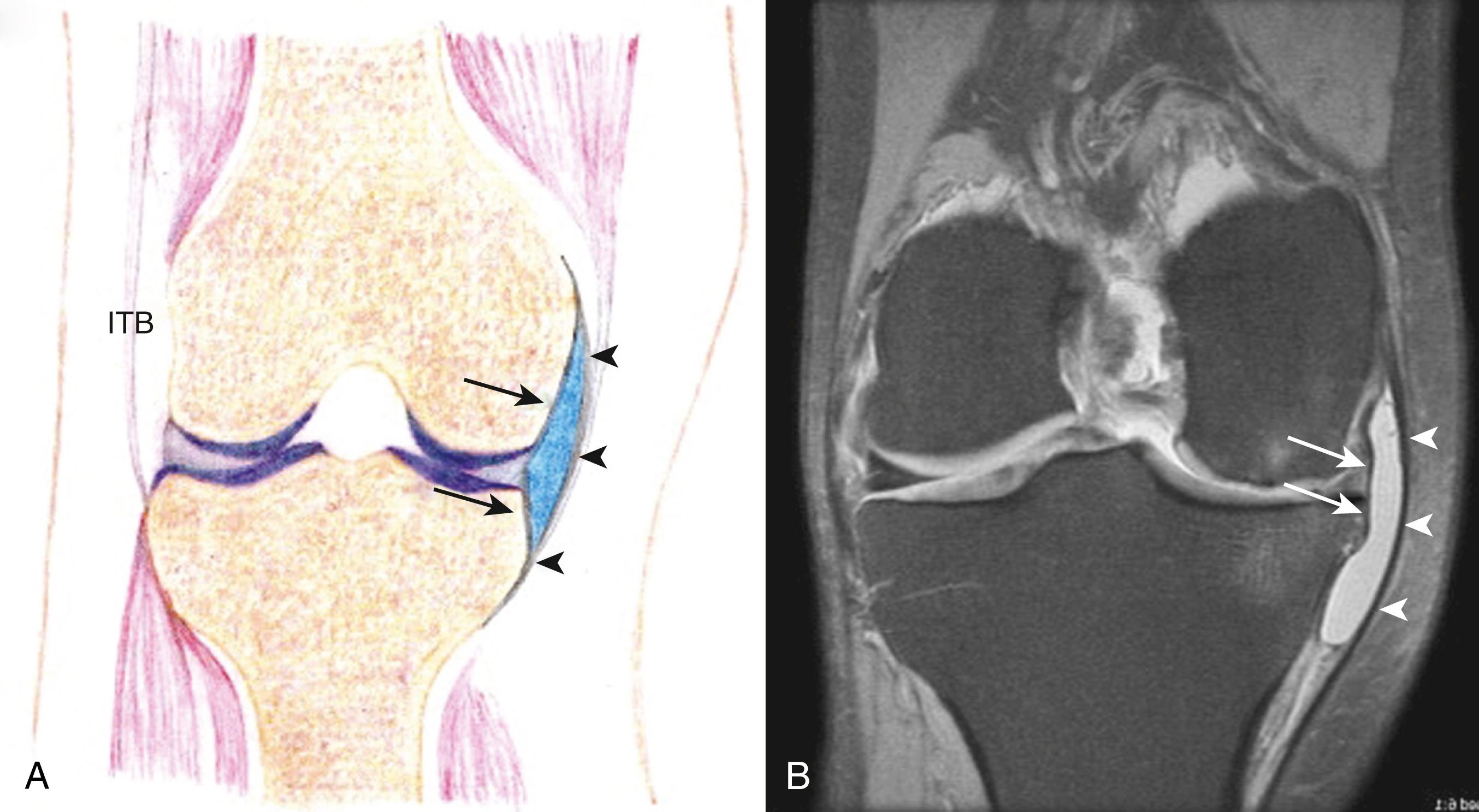
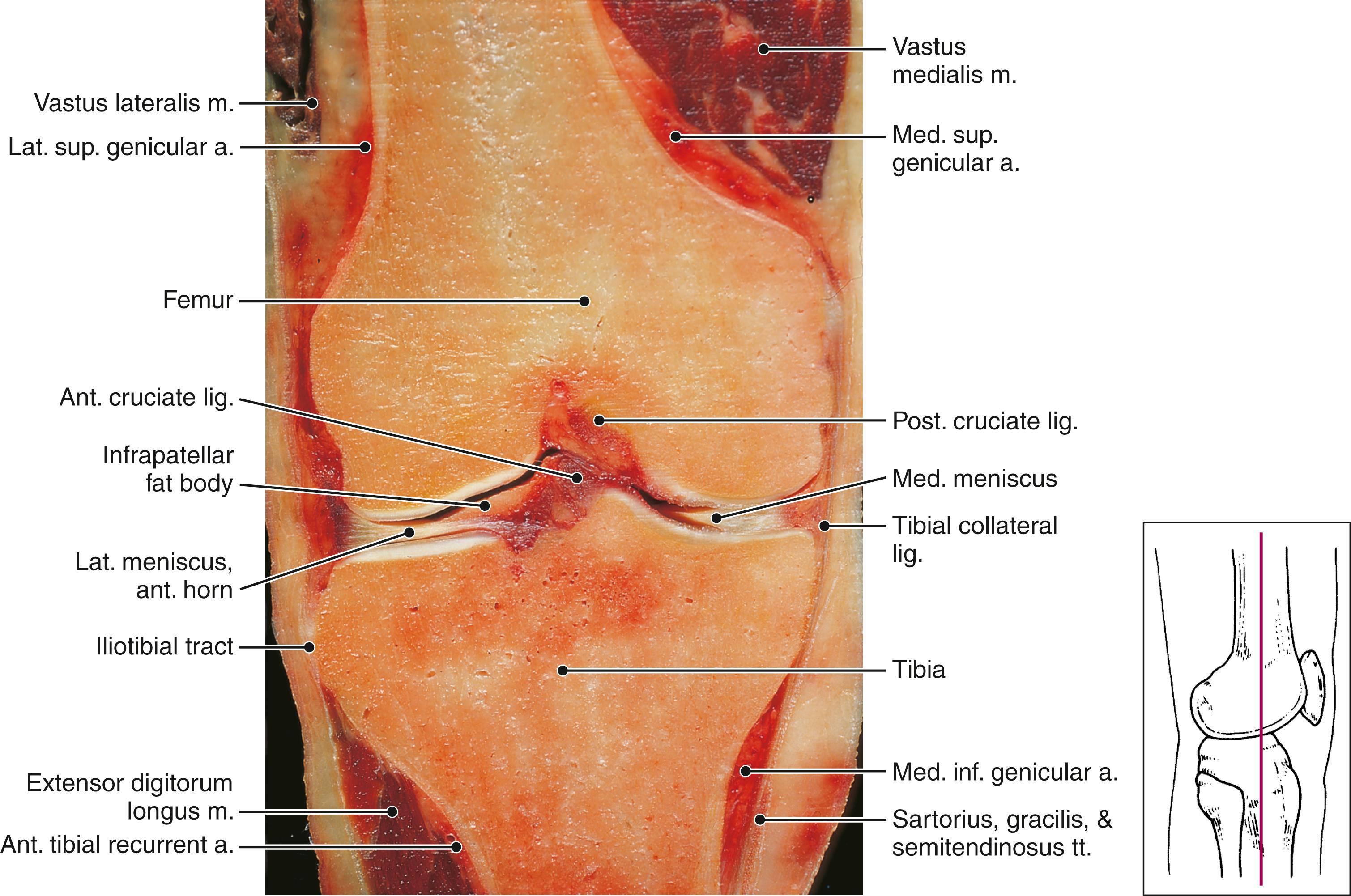
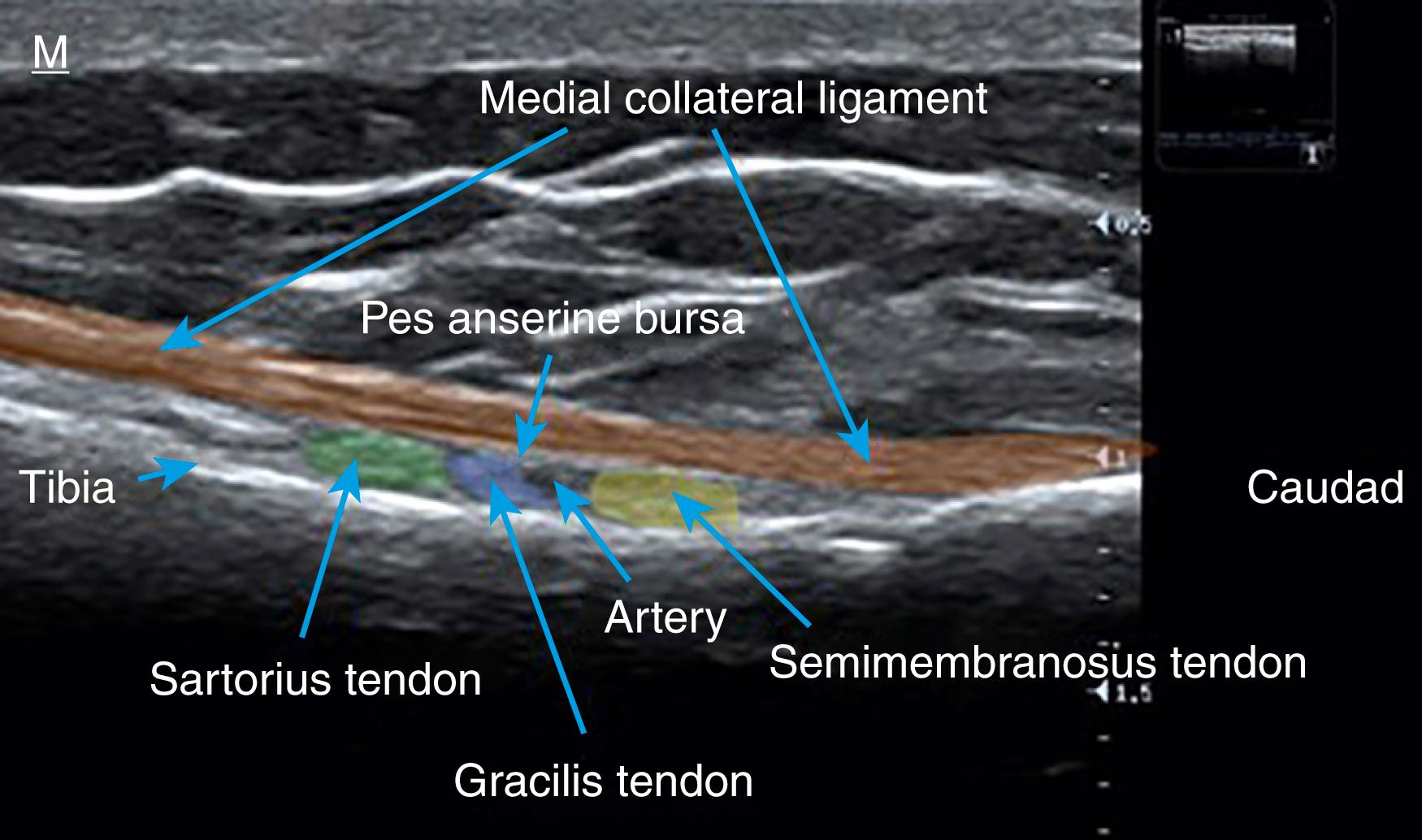
Patients with medial collateral ligament bursitis experience pain over the medial side of the distal femur just over the medial femoral condyle. The onset of medial collateral ligament bursitis frequently occurs after long-distance biking or jogging with worn-out shoes without proper cushioning. Activity, especially that involving resisted adduction and passive abduction of the lower extremity, makes the pain worse; rest and heat provide some relief. Flexion of the affected knee also reproduces the pain in many patients with medial collateral ligament bursitis. Often, the patient is unable to kneel or walk down stairs. The pain is constant and is characterized as aching and may interfere with sleep. Coexistent bursitis, tendinitis, arthritis, or internal derangement of the knee may confuse the clinical picture after trauma to the knee joint. If the inflammation of the medial collateral ligament bursa becomes chronic, calcification of the bursa may occur.
Physical examination may reveal point tenderness over the medial condyle of the femur just above the tendinous insertion of the medial collateral ligament (see Fig. 163.1 ). Swelling and fluid accumulation often surround the bursa. Palpation of this area while having the patient flex and extend the knee may result in a creaking or “catching” sensation. Active resisted adduction of the lower extremity reproduces the pain, as does passive abduction. Sudden release of resistance during this maneuver markedly increases the pain. Pain is exacerbated by having the patient stand with all the weight on the affected extremity and then flex the affected knee 30 to 40 degrees.
Plain radiographs of the knee may reveal calcification of the bursa and associated structures, including the medial collateral ligament tendon, consistent with chronic inflammation. Magnetic resonance imaging and/or ultrasound imaging is indicated if internal derangement, occult mass, or tumor of the knee is suggested as well as to confirm the diagnosis (see Fig. 163.1; Figs. 163.4 and 163.5 ). Electromyography helps distinguish medial collateral ligament bursitis from neuropathy, lumbar radiculopathy, and plexopathy. The injection technique described later serves as a diagnostic and a therapeutic maneuver.
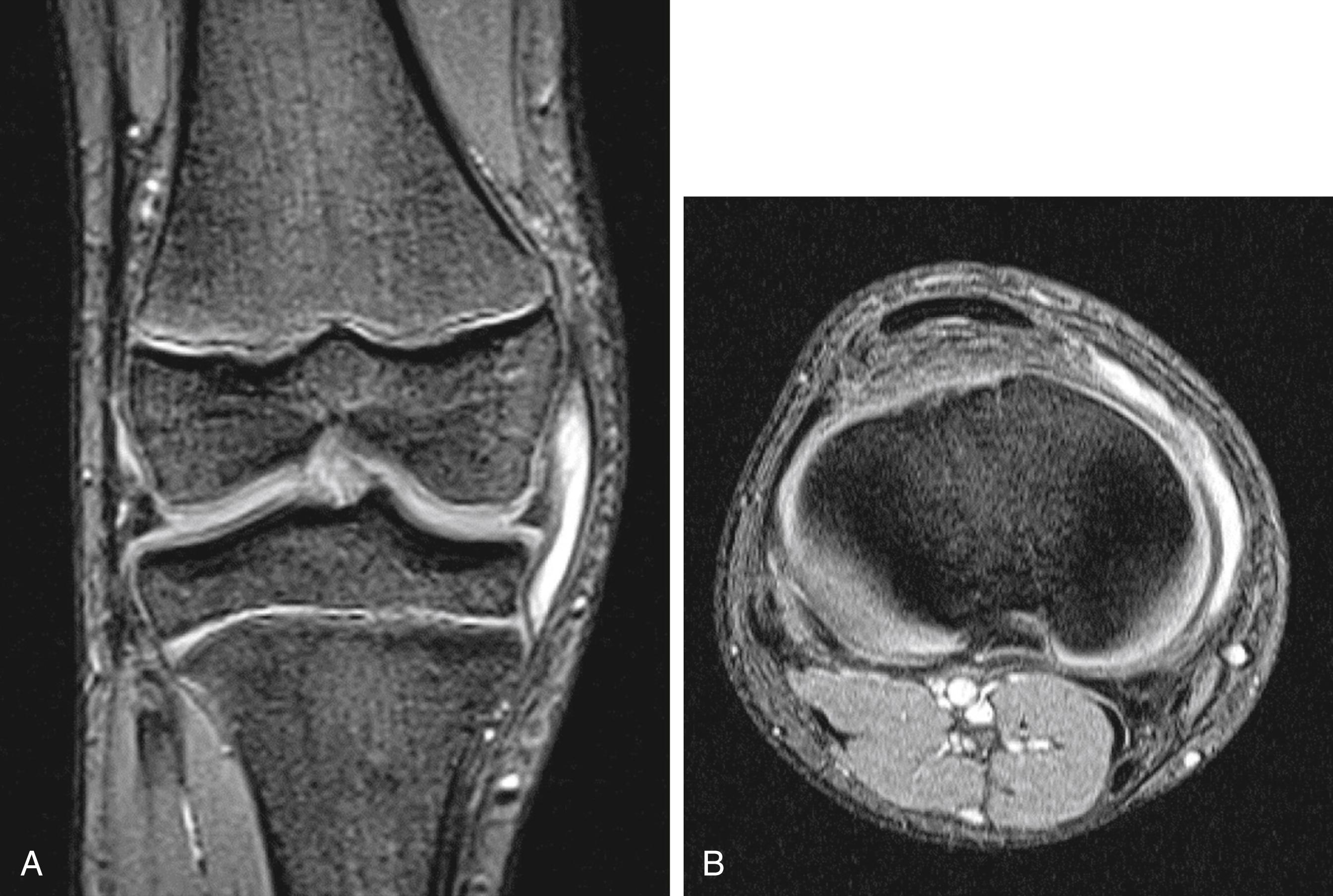
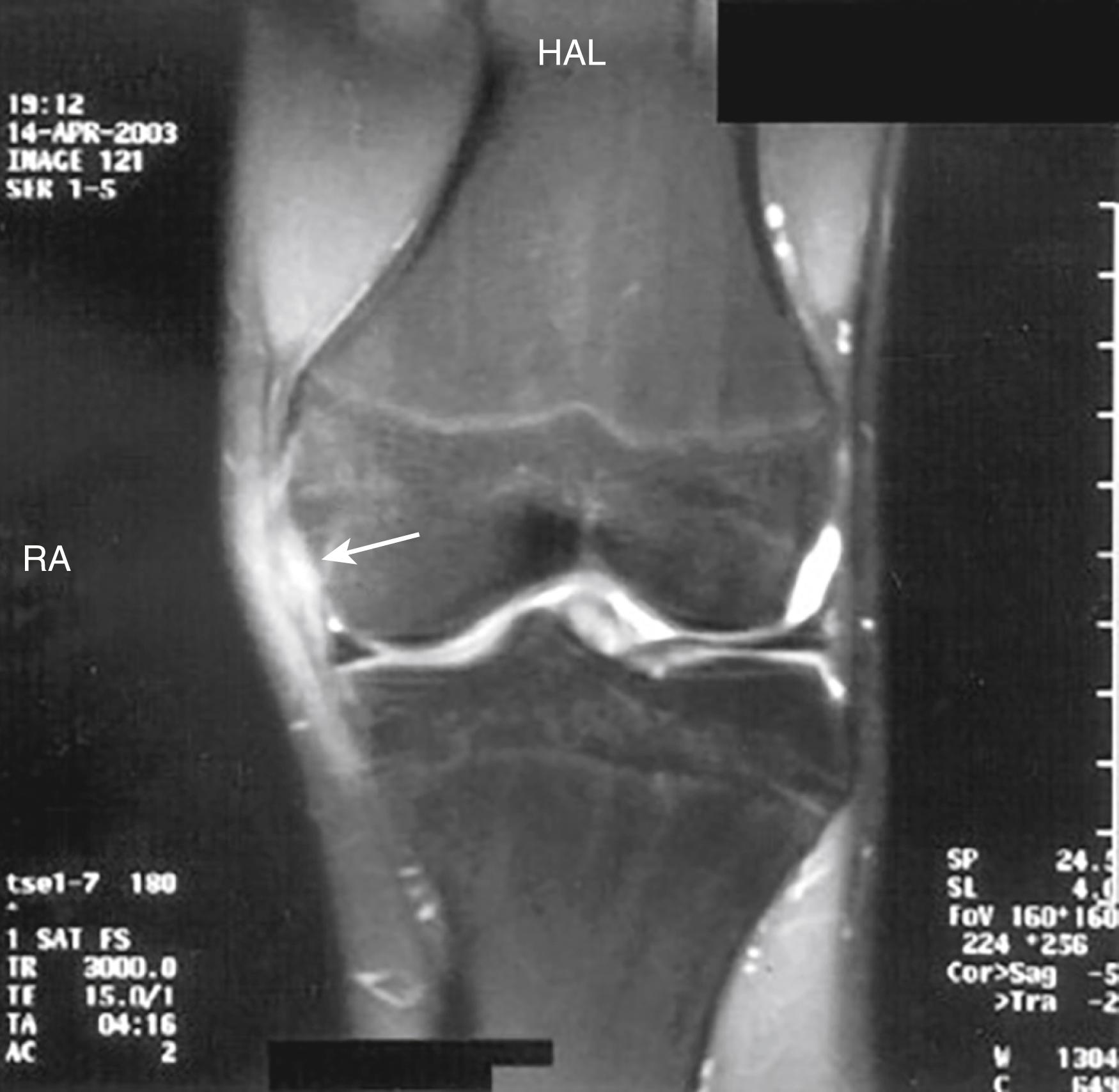
Become a Clinical Tree membership for Full access and enjoy Unlimited articles
If you are a member. Log in here